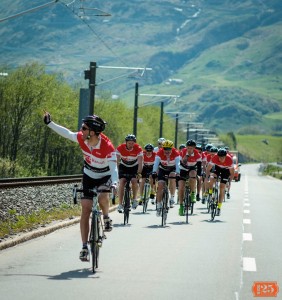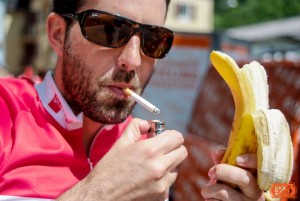

Home » Cycling photo tips with Nigel Clarke: capturing the essence of cycling

Nigel Clarke, over at Boxfish Photography, joined us on the recent Ride25 DTZ Alpine Challenge. He’s a fantastic photographer, and we asked him to put together a few posts outlining his top cycle photography tips. Here’s part 1.
Two words that individually, make me smile but put them together, as I recently got to do for the Ride25 DTZ Alpine Challenge, and I’m in a very happy place.
This blog marks the first in a series where I’ll share my approach to capturing the essence of this recent trip. Whilst we’ll get into gear, settings, placement, lighting etcetera, I’ll also discuss the mental aspects of creating images that will resonate with your subjects and explain how I go about creating a visual story. All aspects that whatever you photograph, I hope can prove useful.
To begin, let’s talk about one of the mental aspects and more specifically passion for the subject.
For me, this is the most important factor and neither all the gear in the world nor the fanciest of locations can make up for a lack of it.

The title of Lance Armstrong’s famous ‘fictional’ book is wholly ironic.
For any cyclist of a certain age, with a decent job who gets out when they can, it really is all about the bike… And the clothes. And the gadgets.

I feel that to make good images of any subject, it helps to be passionate about whatever you’re capturing. Ansel Adams’ landscape images of Yosemite were made by him from an environmental position because he was passionate about highlighting the need to share and protect such a unique environment.
Passion means going beyond looking and really seeing (and in the process, investing something of yourself in the images you make).
I’ve already mentioned that cycling to is a big passion of mine, and has been since I was 14 years old when cycling had little of the cool factor it does today.
What this means is that I ‘get’ cycling. I know that when seeing another cyclist out on the road, most riders would struggle to describe the rider, but could probably describe the bike they were on.
I understand that when there’s preparation for a group ride and collection of other people’s bikes on show, individuals will inspect the bikes with casual sideways glances, and machines will be furtively judged for weight with a quick lift, the components screened for quality and insights into the ability of their riders gleaned from accessories.

This knowledge is important because to capture the essence of cycling (at this level) you have to understand the mindset of the riders. If you happen to count yourself amongst their numbers, then capturing what turns a cyclist on, comes pretty naturally.

Understanding what makes cyclists tick, what they’re most proud of, what they’d love to see of themselves but rarely get the chance to (e.g. the condition of calves or position on the bike, tightness of the bunching, grimacing through effort) are all insights that someone passionate about cycling will want to capture.

I’ve photographed a lot over the years, both for myself and for a range of clients. Looking back at my images I can clearly see when I was passionate about what was in front of me, versus the times I took simply did what I had to do and left.
For the DTZ trip, I can honestly say that I was in the first camp.
How could you not be happy to be in the Alps, with a bunch of great guys who clearly enjoy the sport and get to photograph it all!

Next time we’ll discuss gear and the quirky side of photography.


June 15th, 2015 at 12:10 am
Great pictures of a fabulous adventure. Loved every minute of it and chuffed to bits I have such a good photographic recorded (and video) to fend off the dementia and keep the memory fresH in the mind. Hope to use some of your insights to improve my own snaps.